
Sophie Penkethman-Young’s Scroll Play
Sophie Penkethman-Young dives into the cursed, chaotic and charming depths of the online world to create inquisitive artworks exploring technology, the internet and capitalism with humour.
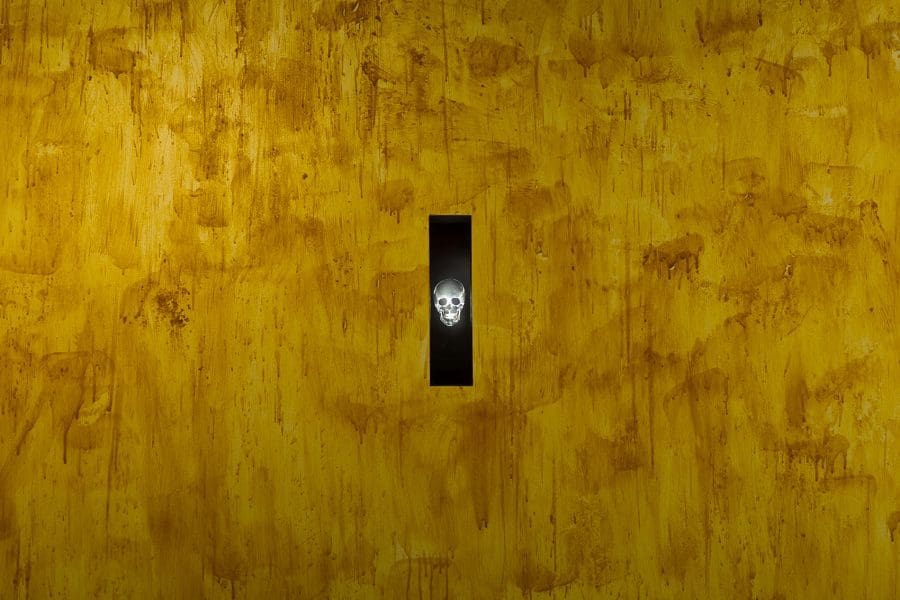
Michel Blazy, Mur de pellicule, 2002; recreated at Mona in 2020, with Philippe Favier, Lucky One — Les pirates (X), 2007.Photograph: MONA/Jesse Hunniford. Image courtesy of MONA Museum of Old and New Art, Hobart, Tasmania, Australia.
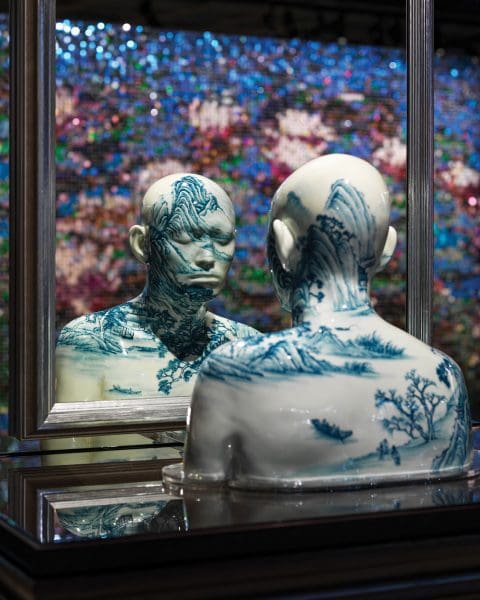
Mona Portrait Gallery with Ah Xian, China China – Bust 82, 2004, with Martina Schumacher, Waterlily Pond, 2004–5. Photograph: MONA/Jesse Hunniford. Image courtesy of MONA Museum of Old and New Art, Hobart, Tasmania, Australia.
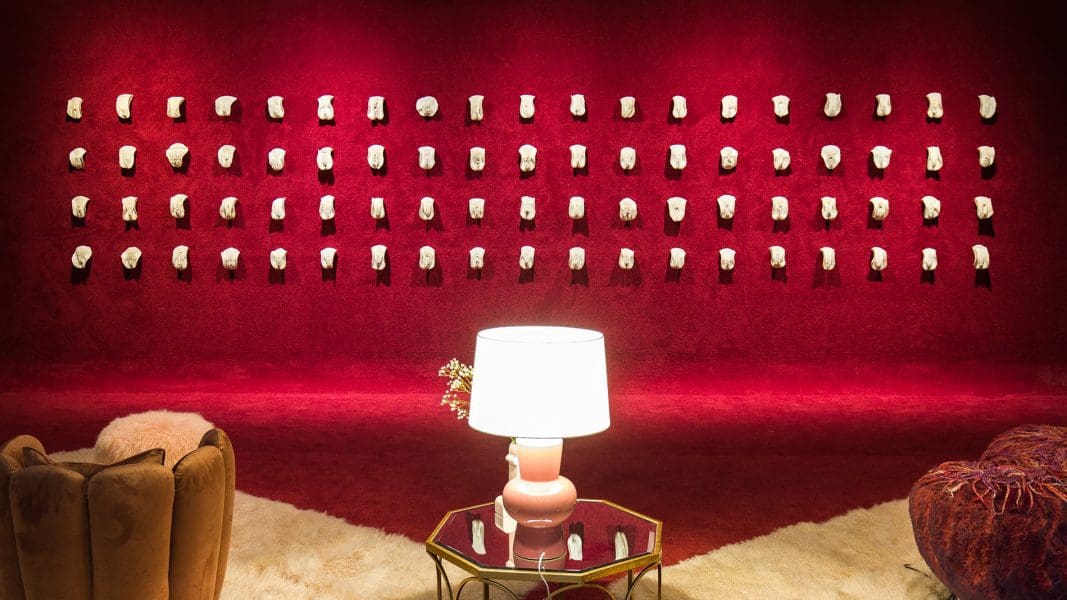
Greg Taylor, Cunts…and other conversations, 2008-11. Photograph: Mona/Jesse Hunniford. Image courtesy of Mona, Museum of Old and New Art, Hobart, Tasmania, Australia.
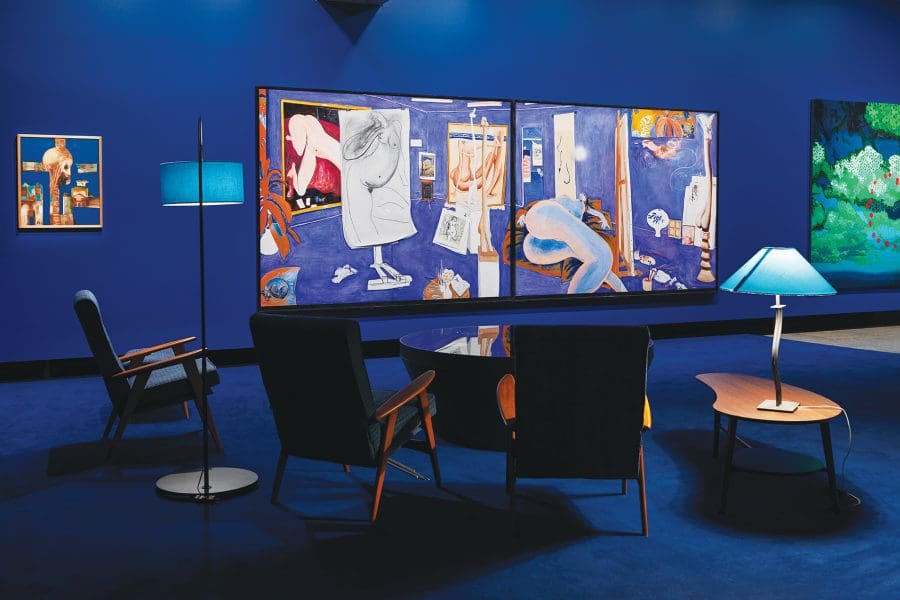
Mona interior, level B1, with Sidney Nolan, Crucifix, 1955; Brett Whiteley, The Naked Studio, 1981; Toby Zeigler, Vitalis, 2007.Photograph: MONA/Jesse Hunniford. Image courtesy of MONA Museum of Old and New Art, Hobart, Tasmania, Australia.

Toby Ziegler, Your shadow rising, 2018. Photograph: MONA/Jesse Hunniford. Image courtesy of MONA Museum of Old and New Art, Hobart, Tasmania, Australia.
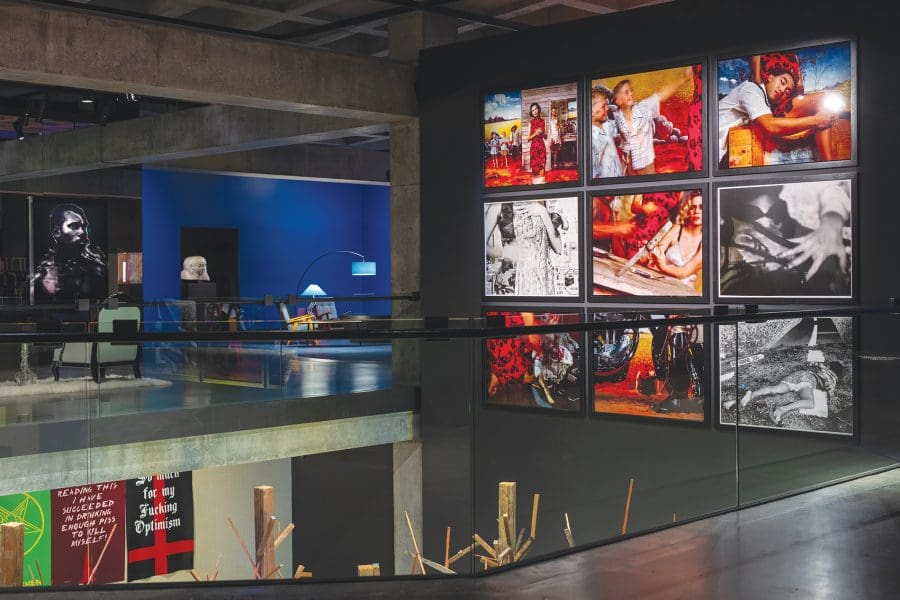
Tracey Moffatt, Something More,1989; Brook Andrew, Sexy and Dangerous II, 1997. Photograph: Mona/Jesse Hunniford. Image courtesy of Mona, Museum of Old and New Art, Hobart, Tasmania, Australia.
When the Museum of Old and New Art (Mona) closed its doors to the public in March 2020, the 15km-high searchlight beams of Ryoji Ikeda’s Spectra (Tasmania) returned to the night sky. First seen in 2013 at the inaugural Dark Mofo festival, since Covid-19 shut down much of Hobart Spectra has streamed into the sky every Saturday night, a steady reminder of resilience.
The sudden absence of physical arts and culture events proved difficult for many, and Mona was not immune to the effects of pandemic-related closure. During Mona’s nine months off-the-grid, only a skeleton staff kept the wheels turning from home and on site. However, while Spectra was shining bright and the public grounds were quiet, inside the museum things were slowly changing. With a future reopening date uncertain and most of the artworks placed in storage, for the first time since its opening in 2011, Mona was a blank slate.
“Once we went into lockdown and the museum closed, I started thinking about what to do straight away,” says senior curator Jarrod Rawlins. With most future plans required to be local, Rawlins worked with Mona owner and founder David Walsh, and exhibition designer Adrian Spinks, to devise a new way forward. As 2021 marks Mona’s tenth year in operation, a rehang of the permanent collection proved a fitting theme to follow. “We needed to set ourselves targets and deadlines even though they were arbitrary because we didn’t know when we were going to reopen,” Rawlins admits.
Encouraging potential visitors to stop and linger with the art more often, Rawlins and the curatorial team came up with the idea of kitted- out ‘lounges’ placed at intervals throughout the museum’s galleries. Centred around specific themes—sex and death, the colour blue, pub culture, ladies—each lounge is marked by its own artwork, chairs and carpets. “The idea of having furniture and carpets in the lounges was to reemphasise Mona’s origin and reason for being—it’s a private collection,” says Rawlins. “It’s like an edgy house museum and we wanted to exaggerate that. One of our goals was to be playful with the rehang and the lounges were really part of that experience.” All the interior pieces were purchased specifically for the rehang—some sourced locally and others shipped in from Europe and North America.
In part a reflection on Mona’s first decade, the rehang contains a number of pieces on display when the museum opened in 2011: Callum Morton’s faux-mountain Babylonia, 2004; Greg Taylor’s assisted suicide machine, My Beautiful Chair, 2010; and the full-sized Mack truck in James Angus’s Truck Corridor, 2004. Even the kids get a look in with a small gallery filled with pillows, portholes and built in tunnels. “There are some really practical outcomes there because we’ve taken over our touring galleries for the collection and I could literally fit in more work,” says Rawlins. Several pieces are exhibited for the first time, most notably a series of late 19th century portraits of First Nations men and women by Sydney-based photography firm, Kerry & Co.
A major new addition to the Mona collection is the bronze sculptural playground Girls Rule, 2016- 2018, by US artist Tom Otterness. Positioned on the lawns outside the museum, it was originally commissioned by Walsh for his (now delayed) Motown hotel development. Rawlins reveals, “It’s been crated in storage for a couple of years. This was a good opportunity to get it out as we had time to design the site and get it ready. David was very focused on the local audience when reopening so it was great to be able to add some cool new things.”

When Mona reopened to the public in the final days of 2020, Nicole Durling, Mona’s director of collections and exhibitions, said it was like being invited back into Walsh’s home. While Mona’s primary function is still to hold an art collection worth over $100 million dollars, it also remains a place personally significant to Walsh: the ashes of his father are entombed within the museum, he wed Kirsha Kaechele in its Wim Delvoye designed chapel, and together they live with their daughter, Sunday, in an apartment clinging to the side of the main building. At times, you can catch a glimpse of Walsh walking the museum grounds in a rainbow striped jumper, unkempt grey hair flying. With the rehang imbued with a sense of playfulness, Mona appears to have softened around the edges, its overall vibe shifting ever so slightly from the subversive adult Disneyland of 2011 to a comfy house museum (albeit still peppered with lashings of violence and soft porn).
In late November 2020, ahead of Mona’s reopening, Walsh wrote in Tasmanian newspaper The Mercury, “When we opened, I thought our place was among the seekers-of-the-new, a space program for the creative urge. Ten years, and three million visitors, and a pandemic, have taught me that our place is with you.” With no blockbuster exhibition on the horizon, and smaller, locally-driven festivals like Mona Foma 2021 currently in favour, what does the future look like for Mona? According to Rawlins, the future makes him smile. Maintaining the enigmatic air of mystery that Mona is exceptionally good at cultivating, any further elaboration is brief. “We’ve got a future, I know that much. We are thinking about it and talking about it. It’s good.”
Mona Collection
Museum of Old and New Art (Mona)
Ongoing through 2021
This article was originally published in the March/April 2021 print edition of Art Guide Australia.